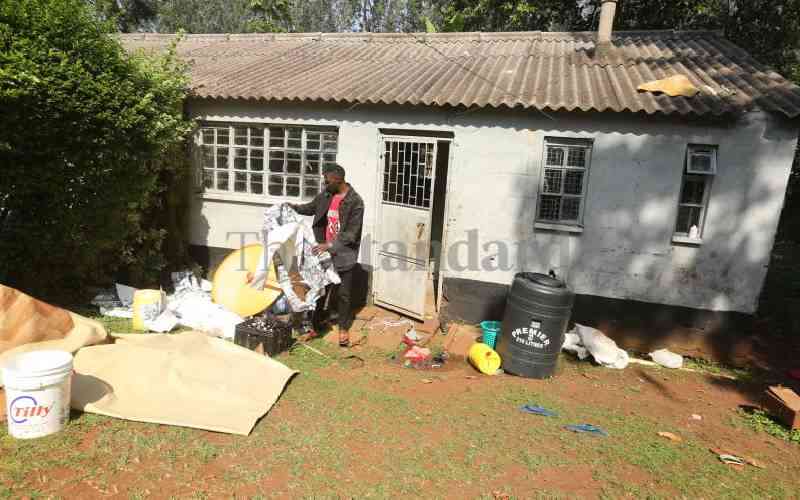By DANN OKOTH
Kenya: It would seem inconceivable, far-fetched, even abstract for the current Eastlands resident if told their neighbourhood was once safe, clean, well-lit and organised.
And a resident of Jericho, Jerusalem and Eastleigh in Nairobi in 1963 would not believe their eyes if they visited these places today. Even the dead would turn in their graves if they were to see the decay, anarchy and ignominy that now abound in these estates.
Yes, Jericho, Jerusalem and Eastleigh represented the crème-de-la-crème of Eastlands; the choice of the middle-class where milk, bread, mail and newspaper was dropped right at your doorstep and it came cheap as well with bread going for 75 cents, milk for 20 cents and newspaper 35 cents. Clean pure drinking water flowed freely from their taps and families could stroll in the well-lit streets well past 9pm after dinner without a care in the world.
Urban crime like muggings, carjackings and murder were unheard of and public transport was as reliable and predictable as the monsoon rains. If you liked you could walk to work or ride a bicycle in the safe streets replete with pedestrian and cyclists’ lanes.
Stagnant water
The apparently glossy picture presented above would be repeated in several urban areas in the country and even in some rural areas in early 1963 and we were not independent yet; at least not until December that year.
There were fewer cases of sickness then but whenever one fell sick, there was always a public hospital nearby. The medicine and consultation was free. Public health inspectors would bother you every now and then asking to inspect your neighbourhood to ensure there was no stagnant water in the trenches that could breed mosquitoes and spread malaria.
Then there were those keen to inoculate your child against tetanus, diphtheria and measles.
Workers were few and far between and the fledging industries and bustling agriculture sector scrambled over the few available qualified individuals to drive their businesses.
“We were snapped out of school in Form Two to go and take up plum jobs in cities like Nairobi, Mombasa and Kisumu,” says Mzee Sylvester Mango who was employed by the East African Railways as a clerk after completing Form Two. “The salary wasn’t much just about Sh180 but it was enough to afford me a comfortable life because commodities were very cheap then and most of the services were also affordable or free,” he adds.
Mr Simon Odhiambo a farmer in Western Kenya says his father who worked for the Ministry of Water in 1963 as an engineer earned a paltry Sh150 but was able to take his four siblings to school besides providing for the family.
“It is almost unbelievable looking back 50 years and considering how life has changed. Life then was very affordable and stress free a far cry from what we experience today,” he says.
Just to give you a glimpse of Kenya’s economic situation in 1963, the shilling changed at 20 against the British pound and that is how the Sh20 got its name ‘pound’. But even then workers could afford to grumble over poor pay. For instance a commission to review workers salaries in 1963 concluded that the Government would collapse if it improved workers salaries by Sh8.
The Civil Service Arbitration Tribunal headed by Sir Barclay Nihill said the Government could not meet a large increase in salaries either from revenue or external aid.
Stay informed. Subscribe to our newsletter
Minimum wage
The commission recommended that the only award that the arbitrator was able to make was an allowance of not more than Sh8 a month, payable in a number municipalities and townships to ensure that no member of the service receives less than the new minimum rates set out in the report.
The employees in areas not named will be paid Sh6 more a month with the provision that nobody should earn less than Sh87 a month. This meant that the new minimum wage for government employees was six pounds and 14 cents in Nairobi, Eldoret and Mombasa. In Kisumu, Kitale and Nakuru six pounds and 15 cents. In Thika urban district six pounds and 13 cents. In Nanyuki and Nyeri six pounds and 1 cent, Kericho five pounds and 19 cents, Machakos five pounds and 17 cents.
The claim put forward by employees was for an increase of Sh55 a month in all areas, raising the minimum in Nairobi for example from six pounds 14 cents a month to nine pounds five cents a month without house allowance and the rural minimum being six pounds 16 cents a month.
Fast forward to 2013 and the wage bill is still a sticking point with teacher, doctor and lecturer strikes being a common feature even as inflation and other factors of production hinder the Government’s and corporate world’s ability to pay workers and make their lives as comfortable as it may have been in 1963.
According to an economic survey released last week, the average annual inflation eased from 14 per cent in 2011 to 9.4 per cent in 2012, partly reflecting improved agricultural productivity and tighter fiscal policies during the first half of 2012. But the country has historical economic issues it still has to grapple with.
Kenya is a regional hub for trade in East Africa. Over reliance on agricultural production and tourism makes the economy vulnerable to international market highs and lows.
 The Standard Group Plc is a
multi-media organization with investments in media platforms spanning newspaper
print operations, television, radio broadcasting, digital and online services. The
Standard Group is recognized as a leading multi-media house in Kenya with a key
influence in matters of national and international interest.
The Standard Group Plc is a
multi-media organization with investments in media platforms spanning newspaper
print operations, television, radio broadcasting, digital and online services. The
Standard Group is recognized as a leading multi-media house in Kenya with a key
influence in matters of national and international interest.
 The Standard Group Plc is a
multi-media organization with investments in media platforms spanning newspaper
print operations, television, radio broadcasting, digital and online services. The
Standard Group is recognized as a leading multi-media house in Kenya with a key
influence in matters of national and international interest.
The Standard Group Plc is a
multi-media organization with investments in media platforms spanning newspaper
print operations, television, radio broadcasting, digital and online services. The
Standard Group is recognized as a leading multi-media house in Kenya with a key
influence in matters of national and international interest.








